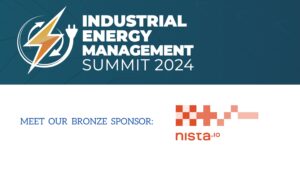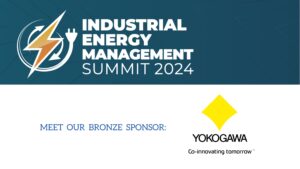Equipment-as-a-Service (EaaS) has recently emerged as an innovative new business model. It is gaining major traction among organizations. It includes especially the ones looking to significantly improve environmental performance. EaaS has the potential to unlock a multitude of sustainability benefits. These can dramatically enhance a company’s green credentials.
Let’s explore what makes Equipment-as-a-Service truly transformative for enterprise sustainability initiatives. Moreover, we will see how leading organizations are leveraging this model to upgrade technology, optimize resources, tap into renewables, and streamline compliance on their journeys to net zero. So, let’s get started.
What is Equipment-as-a-Service and How Does this New Model Work?
With EaaS, companies pay a subscription fee to an equipment provider. This is to gain access to the assets they need for operations. It comes without having to incur major upfront capital expenditures to purchase them outright. The equipment provider retains ownership of the assets over their lifetime and handles activities. It includes upfront procurement, maintenance, servicing, and end-of-life management. This is based on agreed service levels with the customer.
This allows companies to rapidly adopt newer, more advanced equipment as needed. It also avoids constraints imposed by ownership of legacy assets. This enables updating or improving those that may be less efficient. It transforms equipment costs from fixed long-term capital investments into flexible operating expenditures. As a result, it allows strategic scaling based on business needs.
EaaS contracts are typically structured with regular usage-based payments over a defined contract duration. It may range from 2 to 5 years. At the end of the contract term, clients have options to renew, return, or swap out equipment flexibly. It is according to evolving operational requirements. The equipment provider is incentivized to maximize the residual value of assets through practices. It includes repair, refurbishment, and remanufacturing. Moreover, they may reuse assets across multiple customers. This is to optimize utilization over the full lifetime.
The spectrum of equipment that can be “serviced” through Equipment-as-a-Service is vast. It spans everything from lighting systems to commercial vehicles to heavy industrial machinery. This model turns these previously fixed assets from static long-term liabilities into flexible, regularly refreshed utilities. As a result, it allows businesses to reap major efficiency and sustainability gains. We hope that what is Equipment-as-a-service is now clear.
The Key Sustainability Benefits That EaaS Unlocks for Enterprises
For companies focused on improving their environmental performance and meeting ambitious sustainability targets, Equipment-as-a-Service unlocks four major green advantages:
Accelerating Technology Upgrades for Energy and Emission Reduction
EaaS allows companies to adopt innovations rapidly. This is by enabling access to the latest equipment models through flexible subscriptions. It also allows the swapping of outdated, inefficient legacy assets for cutting-edge energy-efficient versions continually.
Newer generations of equipment such as boiler systems, injection molding machines, compressed air systems, and IT servers often provide dramatic leaps in energy efficiency. It sometimes uses 20-40% less power than models from just 5-10 years prior. So, companies no longer have to wait through the full depreciation cycle of owned equipment to refresh assets.
The latest equipment also tends to have advanced diagnostics, controls, and preventative maintenance features. They are lacking in the older models. This helps avoid emissions spikes from potential malfunctions. It also helps avoid overload conditions or sub-optimal operation. EaaS makes it feasible to phase out carbon-intensive assets on accelerated timelines. As a result, it allows businesses to reap energy and emission reductions supporting their net zero goals.
For facilities, fleets, and machinery with high energy footprints, being able to regularly upgrade the latest efficient equipment through Equipment-as-a-Service contracts can directly enable carbon and cost reductions. It is aligned with corporate climate commitments.
Closing Resource Loops Through Circular Economy Practices
In traditional ownership models, business equipment often follows a linear path. It is procurement > operation > disposal. Companies lack a financial incentive to invest in reuse, remanufacturing, or recycling. This is to retain value once equipment reaches end-of-life. Moreover, vast amounts of materials, components, and embodied energy get lost as assets get scrapped.
Under EaaS, the equipment provider owns the assets over their full operating life. Therefore, it carries strong incentives to maximize the residual value of the equipment at end-of-use through circular practices. So, instead of disposal, assets can be refurbished. It can also be upgraded and channeled for a “second life” with another customer.
When components eventually reach their reliability limits, high-value parts like motors, compressors, batteries, or processors can be reclaimed through “parts harvesting”. This is to serve as replacement components for maintenance and repair of other equipment units. Moreover, base materials like metals, alloys, and polymers can be recycled systematically. This is to high standards to supply new production.
This circular model minimizes waste. It is done by keeping equipment and components circulating in closed loops within the technical economy. Equipment-as-a-service structurally aligns with circular economy principles for sustainable and regenerative resource use. This is by designing out waste and enabling strong reuse of products and materials.
Harnessing Economies of Scale to Deploy On-site Renewables
A third sustainability benefit stems from EaaS providers’ scale and centralization in managing vast equipment fleets. It allows investing in solutions not feasible at individual customer locations.
For instance, providers can deploy their renewable energy generation assets. It includes solar PV, geothermal wells, small wind turbines, or biogas recovery systems on-site. This is to power repair, refurbishment, and remanufacturing operations. So, for a single facility, the high upfront capital costs of these solutions are often prohibitive. It is also hard to justify financially.
EaaS providers can cost-justify deploying on-site renewable projects. This is by aggregating stable long-term electricity demand across thousands of customer assets. They reduce reliance on fossil fuel-powered grid electricity. So, it partially decarbonizes any emissions associated with their service operations.
Some providers may even offer customers options to lease equipment. They are equipment that takes its power from renewable energy generated on-site. Thus, it enables additional indirect environmental benefits. The scale advantages of Equipment-as-a-Service providers thus allow access to green power. It is one that typical customers may lack the capacity to deploy on their own.
Radically Simplifying Sustainability Management and Disclosure
A fourth and critical advantage of EaaS for enterprise sustainability teams is that it can dramatically streamline emissions accounting. It can also streamline data management and ESG disclosures. This is when we compare it to traditional equipment ownership models.
When a company owns its business equipment, it has to do a lot of work internally. This involves actively tracking the energy usage of the equipment, assessing its entire lifespan, documenting its end-of-life processes, and ensuring proper recycling. This process can be complicated because the data is scattered across different equipment and locations.
However, with Equipment-as-a-Service (EaaS), the company doesn’t have to worry about all these tasks. The company that provides the equipment takes care of following the rules and reporting. They handle everything from owning the equipment to managing it throughout its entire life. Most of the sustainability data is stored in their centralized systems, and they oversee everything. This means that customers don’t have to spend time gathering detailed sustainability records for each piece of equipment.
Instead, companies can rely on regular reports from the Equipment-as-a-Service provider. These reports cover things like energy use, waste management, materials recovery, and more. Companies use this information to talk about their efforts to be sustainable. This makes it much easier for companies to follow the rules and report their sustainability progress. It also simplifies reporting for different frameworks like GRI, CDP, SASB, and EcoVadis.
By shifting the sustainability management burden externally, EaaS improves disclosure consistency and frees up tremendous internal resources. It also provides comprehensive lifecycle visibility into environmental impacts.
Key Considerations for Maximizing Sustainability Gains
While EaaS provides a game-changing route to slash emissions, optimize resources, and strengthen ESG performance, companies must be thoughtful in implementation. It helps to avoid any unintended sustainability trade-offs.
Equipment-as-a-service contracts should have a structure to provide the right incentives. It aids in maximizing equipment lifetimes before replacement, extensive reuse of equipment between customers, responsible recycling of materials at end-of-life, and transparent sustainability reporting.
Customers should assess if factors like increased transportation of assets between facilities wipe out efficiency gains from technology upgrades. They should investigate whether asset power comes from on-site renewable energy as applicable or contains recycled materials. Proactive communication with providers will help ensure optimal equipment performance across the lifecycle.
Some of the key questions sustainability managers should explore include:
- How can equipment lifespans be maximized before replacement becomes necessary?
- What contractual terms encourage maximum reuse of equipment across customers rather than new production?
- Can fleet vehicle routes be optimized to reduce transport-related emissions?
- How much of our utilized equipment is powered by on-site renewable energy?
- Can we obtain granular equipment-level sustainability data for our reporting?
- Are there opportunities to pilot new technologies like AI-enabled predictive maintenance to boost efficiency further?
Asking the right strategic questions will ensure companies maximize sustainability gains. This is as they transition more business equipment to innovative EaaS consumption models.
The Net Zero Energy Sourcing & Power Purchase Agreements Summit
EaaS adoption is picking up speed. This is with its power to make a big difference in how businesses reduce their carbon footprint, use resources better, recycle, and perform well in terms of environmental, social, and governance factors. The upcoming Net Zero Energy Sourcing and Power Purchase Agreements Summit on February 29 – March 1, 2024, is a great opportunity for sustainability leaders from different industries to discuss these important topics. It will help to learn how leading organizations are leveraging Equipment-as-a-Service to drive sustainability gains today.
Through keynotes, panel discussions, and interactive workshops, attendees can hear directly from EaaS providers, equipment manufacturers, customers, and advisors about best practices for structuring agreements, aligning incentives, maximizing about best practices for structuring agreements, aligning incentives, maximizing technology benefits, and ensuring transparent sustainability reporting.
The summit provides a unique opportunity to build capabilities, forge connections, and leave with actionable strategies to harness EaaS for meeting net zero and circular economy goals. As the pressure mounts for ambitious climate action, now is the time for forward-looking companies to explore how this innovative model can optimize their physical assets, resources, and energy utilization on the journey to sustainable business.





